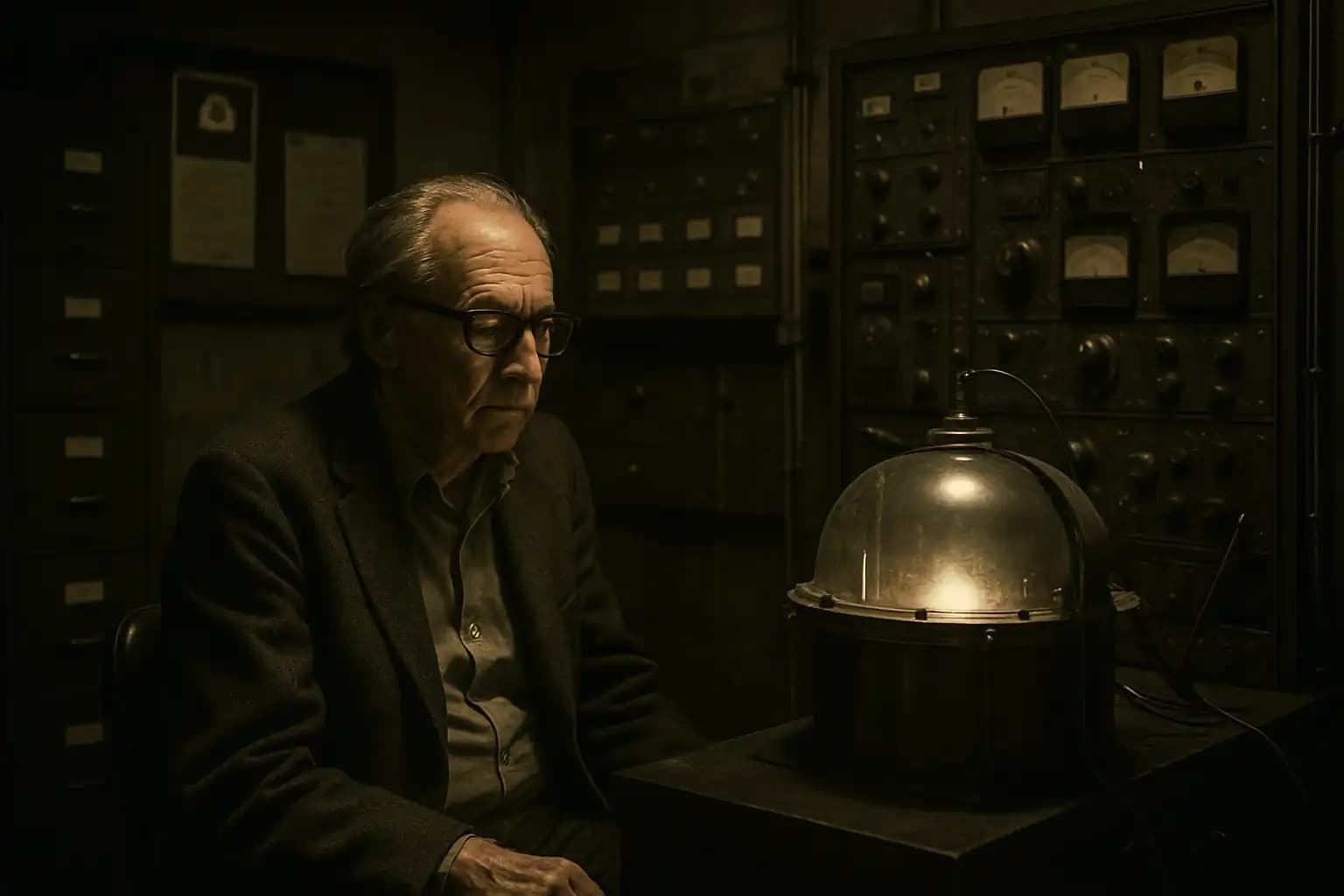In the shadowy landscape where fringe science meets espionage, Ingo Swann’s story seems too wild for fiction. In the early 1970s, Swann—an artist and self-described psychic—impressed parapsychologists and intrigued the intelligence community. He claimed an extraordinary ability: “remote view,” perceiving distant or hidden locations without sensory input. By 1972, Swann was bending reality under CIA scrutiny in shielded labs, prompting intelligence officials to wonder: could psychic spying be weaponized?
From Mind-Bending Feats to Top Secret: The Launch of Project Stargate
Despite skepticism, Swann authored bizarre lab moments. An archival report from Popular Mechanics details how Swann disrupted magnetic fields in a sealed underground container through mere intention—an outcome that amazed both observers and CIA scientists. The agency soon formalized research on psychic phenomena, creating what became known as Project Stargate. This program blended shadowy codewords and governmental games, uniting Army, DIA, and CIA resources to explore potential mind-over-matter intelligence collection.
The Cold War’s panic over alleged Soviet parapsychology breakthroughs fueled a frantic effort to test and train remote viewers, with Swann defining the protocols. As biographical records recount, project supporters praised Swann’s accuracy as high as 95 percent—though critics accused them of cherry-picking data. His remote-viewing descriptors—like those describing rings on Jupiter before NASA’s Pioneer 10 flyby confirmed them—ignited awe and skepticism in equal measure.
Declassified Files: Inside the CIA’s Experiments with Nonlocal Perception
The declassification of millions of CIA files on Project Stargate—chronicled by CNET—revealed not only Swann’s exploits but also the extent of U.S. government investment in ‘reality manipulation’ research. Conducted over decades, Stargate included everything from missing person hunts to battlefield surveillance, with 26,000 remote viewing sessions reportedly performed by 227 individuals before its 1995 termination. While the CIA eventually deemed the project a failure for actionable intelligence, some evaluations—like the American Institutes for Research review—acknowledged statistically significant “above chance” results, but noted ambiguity and lack of operational utility hampered practical use.
This was not an isolated oddity. The Stargate timeline matches a wider web of Cold War strangeness, featuring everything from psychic experiments to nuclear brinkmanship, as explored in analyses like these military risk briefings and field reports of innovative government research.
The Strange Legacy: Science, Speculation, and the Limits of Proof
What’s real and what’s hype? Swann’s “successes” attracted loyal advocates and determined skeptics alike. Professional mentalists and mainstream scientists have condemned most remote viewing research as irreproducible or the result of methodological flaws—a conclusion echoed in critical reviews of remote viewing. Yet some findings, like Swann’s alleged prescient details about Jupiter, still perplex even seasoned debunkers. Declassified summary reports, archived on the official CIA site, confirm the agency took psychic phenomena seriously, even as documents quietly acknowledge that much of the produced data was unreliable or too ambiguous for intelligence use.
This phenomenon resonates throughout contemporary scientific debates: high-profile claims accompanied by intriguing results clouded by replication crises and statistical manipulation. A pertinent example is the current anxiety surrounding rogue AI systems, outlined in investigative notes on alignment risk and existential threats.
Why This Matters: Perception, Power, and Enduring Conspiracies
Project Stargate’s legacy transcends historical footnotes or internet memes. Its existence—once top secret, now public—fuels ongoing debates about the boundaries of reality, consciousness, and government secrecy. As discussed in other deep-dive myth analyses and intelligence culture reports, Stargate lies at the intersection of official narratives, classified research, and age-old fascination with psychic power. In 2025, the cycle continues: emerging scientific frontiers—from quantum phenomena to catastrophic AI—trigger the same blend of curiosity, fear, and suspicion that Swann once incited. For those seeking to discern fact from fiction, pattern from paranoia, resources like Unexplained.co remain invaluable. Reality may defy easy categorization—but so do the files locked in government vaults.




